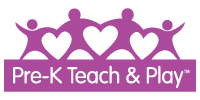
404 - Page Not Found
OOPS! The content you're looking for is not here. You have 3 options:
#1
Sorry you aren't able to find what you are looking for. My work around inclusive early care and education has moved. Want to see what I’m up to these days? Come over to my new site: inclusiveschooling.com
#2
Were you trying to find out more about Kristie, or invite her to speak at your event? Email kristie@inclusiveschooling.com
#3
All good leaders need time to renew...I invite you to take a minute to:
• Do something that slows the body and focuses the mind
• Engage in physical activity (dance, stand up, reach up)
• Interact and be a part of nature (even look outside if you are near a window)
• Do things that promote optimism and hope (type a gratitude email to a staff member)
• Engage in acts of self-kindness/self-compassion (take a deep breath)
For more FREE Resources Follow Us:
facebook.com/InclusiveSchooling